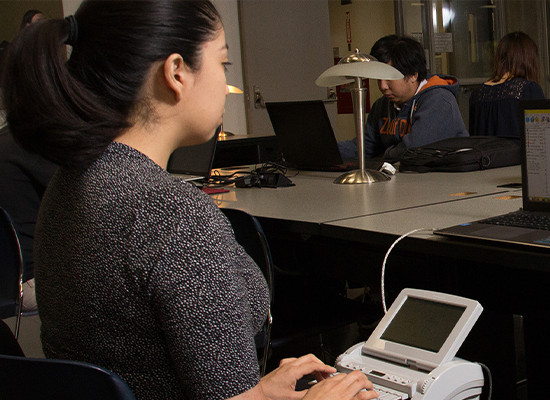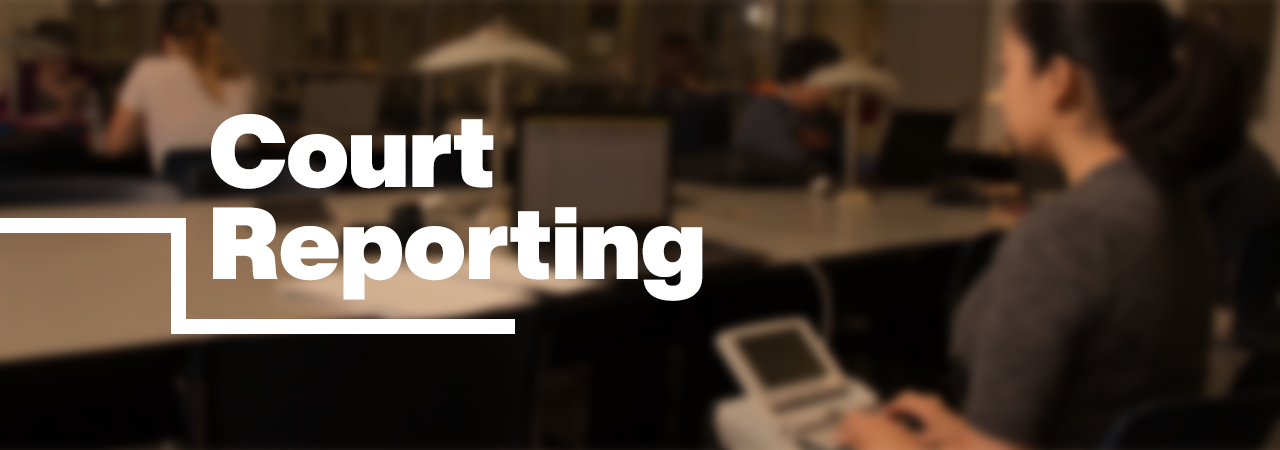Just How Court Reporting Functions: A Step-by-Step Overview to the Legal Process
Court reporting is a critical component of the legal system. It involves a structured process that ensures exact paperwork of proceedings. From preparation to the final shipment of records, each step is crucial. Recognizing exactly how court reporters run deals insight right into the honesty of legal records. The nuances of their work can profoundly impact legal results, prompting concerns regarding the technologies and methods they employ. What are the particular strategies that define this career?
The Role of Court Reporters in the Legal System
Stenotype reporter play an essential duty in the lawful system by supplying accurate and trustworthy records of court procedures. Their job guarantees that every spoken word throughout hearings, trials, and depositions is recorded, which is vital for preserving a main record of events. This transcription is essential for charms, as it enables higher courts to examine the procedures and establish if any type of errors were made throughout the test.
Additionally, stenotype reporter aid in protecting the integrity of the lawful procedure by developing verbatim records that can be referred to by lawyers, courts, and various other events entailed in a situation. They frequently use specific tools and software application to catch dialogue with precision. Beyond the court, their transcripts can function as crucial historical papers, using understanding right into judicial process and the lawful system's functioning. Ultimately, stenotype reporter contribute substantially to transparency and accountability in lawful matters.
Planning for a Court Reporting Session
Preparation is crucial for a successful court reporting session, as it ensures the precision and efficiency of the transcription procedure. Court press reporters start by evaluating situation materials, including pleadings and witness checklists, to familiarize themselves with the terms and context. They additionally ensure that they have the necessary tools, such as steno machines, note pads, and back-up devices, on-line.
Prior to the session, communication with lawful teams is essential. Press reporters frequently make clear any specific requests relating to formatting or chosen terminology. In addition, they may set up to consult with witnesses or attorneys to discuss the procedures and verify the schedule. Arriving early to establish up the tools allows for repairing prospective technological concerns. Generally, extensive prep work not just enhances the reporter's self-confidence however additionally contributes significantly to producing a accurate and clear document of the lawful process.

Capturing the Document: Techniques and Devices
Utilizing sophisticated strategies and trusted devices, stenotype reporter carefully record the spoken word throughout legal procedures. They use stenography, a method entailing a specialized device that allows them to kind multiple noises at the same time, consequently transcribing discussion in actual time. This equipment, known as a steno keyboard, is equipped with keys that represent syllables and words, making it possible for swift and precise input.
Along with stenography, stenotype reporter might use audio recording devices as supplementary devices. These devices act as back-ups, ensuring that no crucial information is lost throughout procedures. Some press reporters integrate software application that improves their transcription efficiency, offering functions such as voice acknowledgment and automated formatting.
Correct positioning and focus are extremely important; press reporters must keep focus on all audio speakers, catching subtleties and inflections that add to the document. With a combination of skill and technology, stenotype reporter maintain the integrity of the legal procedure by making certain a extensive and precise document of occasions.
Recording the Process
Transcribing the procedures calls for stenotype reporter to transform talked discussion right into composed text with extraordinary accuracy and speed. This process commonly occurs instantly after the recording has been caught, making use of specialized software application that enables smooth transcription. Stenotype reporter need to listen diligently to the sound, making sure that every pause, inflection, and word is precisely represented in the records.
They commonly depend on shorthand systems, personal transcription skills, and advanced innovation to promote this job. The atmosphere in which they function can be busy and sometimes chaotic, as lawful procedures frequently involve numerous speakers and technical jargon. Court press reporters must likewise keep concentration to capture nuances in tone and context that may be essential for the lawful record. Inevitably, the accuracy of the transcription is crucial, as it works as a main paper for future referral in lawful procedures.
Assessing and Modifying the Records
The procedure of assessing and editing and enhancing the transcript is important for making certain precision in court reporting. Stenotype reporter commonly team up with lawyers to clarify any type of ambiguities and confirm Continued the accuracy of the videotaped statements. This collaboration is necessary for keeping the integrity of the lawful document.
Significance of Accuracy
Accuracy functions as the foundation of effective court reporting, as also minor errors can greatly change the meaning of lawful process. The examining and editing process is vital in guaranteeing that records show the spoken word with integrity. Stenotype reporter meticulously confirm names, technological terms, and lawful jargon to preserve accuracy. This focus to detail assists avoid misunderstandings that can influence instance results. Precision fosters trust fund among legal professionals, clients, and the court, reinforcing the integrity of the judicial system. Errors can cause conflicts or appeals, making it crucial for reporters to improve their job completely. Eventually, the quest of precision not only enhances the integrity of the transcript however also promotes the criteria of the lawful career.
Collaboration With Attorneys
Partnership between stenotype reporter and lawyers is crucial during the evaluating and modifying stage of transcript manufacturing. This process guarantees that the last record properly shows the spoken word and sticks to legal standards. Attorneys usually assess records for particular terminology, context, and any type of prospective mistakes that might impact the situation. Stenotype reporter count on attorneys' expertise to clarify uncertain sections or emphasize essential declarations. Effective communication is vital; attorneys might provide comments or demand modifications, which court reporters have this content to address immediately. This partnership not only boosts the quality of the transcript but also adds to a smoother lawful procedure. Eventually, collaborative initiatives cause a accurate and trustworthy record, essential for lawful procedures and future referrals.
Providing the Last Transcript to Clients
Upon completion of the transcription process, court reporters carefully prepare the final paper for delivery to their customers. This last records undertakes complete checking to ensure precision, as any mistakes might considerably influence lawful process. Stenotype reporter style the paper according to the certain demands set forth by the customers or lawful companies, including pagination, indexing, and any required exhibitions.

Finally, court reporters may provide a cover letter summing up key details and supplying further aid if required. This extensive approach guarantees that clients receive a polished, exact, and quickly navigable transcript, crucial for their legal requirements.
Often Asked Concerns
What Credentials Are Needed to End Up Being a Court Reporter?
To come to be a stenotype reporter, people normally require a secondary school diploma, completion of a court reporting program, and accreditation or licensure, relying on state requirements. durham court reporting. Proficiency in shorthand and modern technology is additionally crucial for success
The length of time Does It Require To Total Court Reporting Training?
Usually, finishing court reporting training takes in between 18 months to 4 years, relying on the program's strength, the trainee's speed, and the certain requirements of the jurisdiction in which they wish to practice.

What Is the Typical Wage of a Court Reporter?
The average wage of a stenotype reporter varies by location and experience, typically ranging from $45,000 to $100,000 annually (durham court reporting). Aspects such as field of expertise and need can substantially influence their revenues in different regions
Are Court Reporters Required to Have Qualification?
Court press reporters are normally called for to get accreditation, which assures they possess the essential abilities and expertise for exact transcription. Qualification demands can vary by state or jurisdiction, mirroring specialist criteria within the lawful neighborhood.
Can Court Reporters Work From Another Location or Freelance?
Court press reporters can work from another location or freelance, providing versatility in their profession. Lots of utilize technology to transcribe proceedings from numerous locations, enabling diverse possibilities in the lawful field while keeping a work-life balance.
Court reporters play a necessary function in the lawful system by providing trusted and exact records of court procedures. Furthermore, court reporters aid in maintaining the stability of the legal procedure by developing verbatim records that can be referred to by attorneys, courts, and various other parties entailed in a case. Using advanced strategies and trusted tools, court reporters carefully catch the spoken word throughout lawful process. Court reporters must likewise maintain focus to catch subtleties in tone and context that might be essential for the lawful document. To end up being a court press reporter, individuals usually require a high institution diploma, completion of a court reporting program, and certification or licensure, depending on state needs.